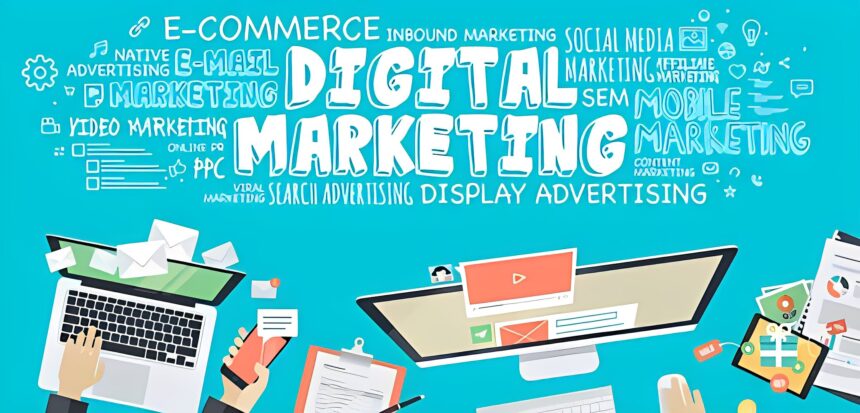Introduction
In the ever-evolving landscape of digital marketing, the power of content remains undisputed. Crafting content that not only captivates but also converts is akin to finding the alchemy of online success. But what lies behind the scenes of creating such impactful content? Let’s dive into the strategies that blend art and science, ensuring your content resonates deeply with your audience and drives your desired outcomes.
Understanding Your Audience
The cornerstone of compelling content is a deep understanding of your audience. Before a single word is written, it’s crucial to know who you’re writing for, their needs, preferences, and pain points. Utilizing tools like Google Analytics, social media insights, and direct surveys can provide a wealth of information, enabling you to tailor your content to the audience’s specific interests and behaviors.
The Art of Headline Writing
A captivating headline is your content’s first impression, and often, your only chance to grab the reader’s attention. Headlines should be compelling, clear, and curiosity-inducing, promising value that the content will deliver. Utilize proven formulas, such as “How to” guides, listicles, and question-based headlines, to craft titles that stand out in a crowded digital space.
Storytelling that Engages
Storytelling is the heart of engaging content. A well-told story can transport readers, evoke emotions, and foster a connection that transcends the digital divide. Incorporate storytelling by sharing real-life experiences, customer journeys, or even a day in the life of your brand. These narratives not only entertain but also build trust and relatability.
SEO Optimization
SEO is the backbone of discoverable content. Integrating relevant keywords, understanding search intent, and optimizing for readability are key. However, the golden rule of SEO is to write for humans first, search engines second. Ensure your content answers questions, provides value, and engages the reader, all while being SEO-friendly.
Visuals that Enhance
Visuals play a pivotal role in breaking up text, illustrating points, and adding an emotional layer to your content. Whether it’s high-quality images, informative infographics, or engaging videos, visuals should complement and enhance your narrative. Remember, in a visually-driven online world, a picture is worth a thousand clicks.
Creating a Content Calendar
A well-planned content calendar is your roadmap to consistent, relevant, and timely content. It helps you align your content with key industry events, holidays, and your marketing objectives. Start by identifying major themes relevant to your audience, then break these down into specific topics for each piece of content. Utilize tools like Trello, Asana, or Google Calendar to organize and schedule your content, ensuring a steady stream of material that supports your strategic goals.
Interactive and Multimedia Content
Engagement skyrockets when audiences can interact with your content. Quizzes, polls, and interactive infographics invite participation, transforming passive readers into active participants. Similarly, multimedia content like videos and podcasts can significantly increase dwell time and engagement rates. Incorporate these elements to diversify your content format and provide value in various ways that cater to different audience preferences.
Calls to Action that Convert
Your content’s call to action (CTA) is the bridge between engagement and conversion. Each piece of content should have a clear, compelling CTA that guides the reader toward the next step, whether it’s subscribing to a newsletter, downloading a guide, or making a purchase. Experiment with the placement and wording of your CTAs to find what resonates best with your audience, and don’t shy away from creative approaches that stand out.
Analyzing and Adjusting Based on Data
The only way to truly understand what content captivates and converts is to dive into the data. Use analytics tools to track engagement metrics, conversion rates, and user behavior in relation to your content. This data will reveal what’s working and what isn’t, allowing you to make informed adjustments. Continually refining your content strategy based on performance data is key to maximizing its impact.
Leveraging Social Proof
Social proof, such as testimonials, reviews, and user-generated content, can significantly enhance your content’s credibility and persuasiveness. Incorporating these elements into your content strategy not only showcases the value of your offerings but also builds trust with your audience. Highlighting success stories and positive feedback demonstrates that others have benefited from your content or products, encouraging new readers to take action.
Repurposing Content
Maximize the reach and value of your content by repurposing it across different formats and platforms. A blog post can be transformed into a series of social media posts, an infographic, or even a video. This approach not only extends the life of your original content but also caters to different audience preferences, increasing the overall effectiveness of your content strategy.
User-Generated Content
Encouraging and showcasing content created by your audience can significantly boost engagement and authenticity. User-generated content (UGC) fosters a community around your brand and provides fresh, relatable material that resonates with potential customers. Create campaigns that inspire your audience to share their experiences, and prominently feature this content across your platforms.
Staying Ahead of Trends
Staying relevant means keeping a pulse on industry trends, emerging topics, and evolving audience interests. Utilize tools like Google Trends, BuzzSumo, and social listening platforms to identify what’s capturing attention in your field. By aligning your content with these trends, you can position your brand as a thought leader and capture the interest of a wider audience.
Conclusion
Crafting content that captivates and converts is an art form underpinned by strategic planning, creativity, and adaptability. By embracing these behind-the-scenes strategies, you can elevate your content, resonate with your audience on a deeper level, and achieve your marketing objectives. Remember, the most effective content speaks directly to the needs, interests, and emotions of your audience—engage them, provide value, and they will follow.
FAQs
Q1: How often should I update my content strategy?
A1: Review and adjust your content strategy at least quarterly to align with evolving audience interests, market trends, and business objectives. Continuous monitoring and flexibility are key.
Q2: Can I still rank well without focusing heavily on SEO?
A2: While SEO is crucial for discoverability, exceptional content that deeply engages and satisfies user intent can also achieve high rankings. However, combining quality content with solid SEO practices is the best approach.
Q3: How important are visuals in my content?
A3: Extremely. Visuals not only break up text and make your content more readable but also enhance understanding, retention, and engagement. They’re an integral part of a successful content strategy.
Q4: What’s the best way to encourage user-generated content?
A4: Create engaging campaigns that invite participation, offer incentives for sharing content, and regularly feature UGC on your platforms to motivate others. Make it easy and rewarding for users to contribute.
**Q5: How do I measure the success
of my content?**
A5: Success metrics can include engagement rates, website traffic, conversion rates, and social shares. Set clear objectives for each piece of content, and use analytics tools to track performance against these goals.





